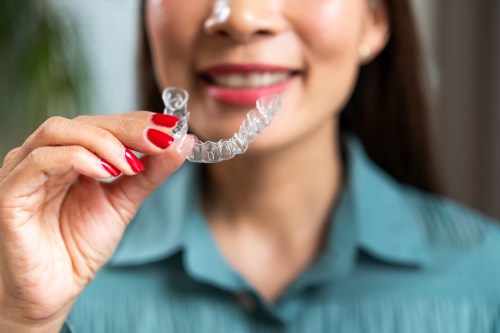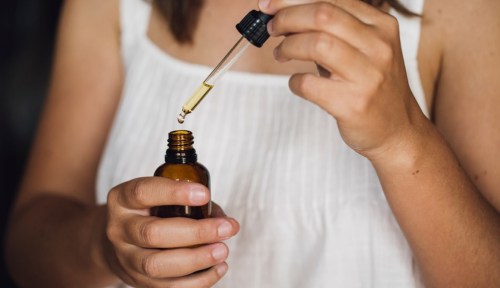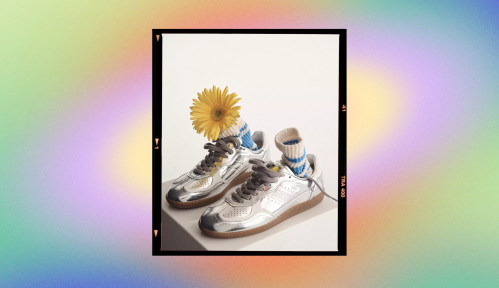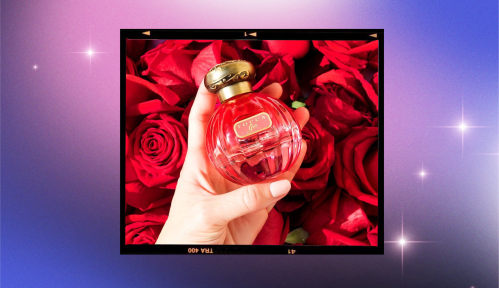Our editors independently select these products. Making a purchase through our links may earn Well+Good a commission
Not to be the bearer of bad news, but even if you fancy yourself a perfectionist-leaning rule follower in all arenas of life, there’s a chance you’re not hitting the gold-star-worthy mark in your oral-care routine. Yep, this might be the case even if you’re brushing your teeth morning and night for two full minutes, flossing daily, going in for a professional cleaning twice yearly, and following every other tenet of pristine oral hygiene, as specified by the American Dental Association (ADA). For many, the weak link of their routine has to do with the trusty retainer—specifically, failing to clean it correctly or regularly enough.
Experts in This Article
Chris Salierno, DDS, is a dentist and chief dental officer for Tend, a chain of modern dental studios.
cosmetic dentist at the New York Center for Cosmetic Dentistry
Unfortunately, the commitment to simply wear your oral appliances—like retainers, Invisalign trays, and night guards—isn’t enough to get a dentist’s standing ovation for flawless compliance. That’s because these mouth inserts can get truly disgusting as leftover food and bacteria get stuck in their cracks and crevices. So it’s important for your oral health that you not only learn how to clean a retainer, but that you actually do it—and often.
“A dirty retainer can harbor bacteria, plaque, and food particles, leading to bad breath, gum disease, and even infections,” says Christopher Salierno, DDS, chief dental officer at Tend. “Regular cleaning ensures your retainer stays safe to wear and maintains your overall oral health.”
There’s no universal guideline for how often you should clean your retainer, says Lena Varone, DMD, a cosmetic dentist at the New York Center for Cosmetic Dentistry. But, she adds, “A good standard for cleaning your retainer is in the morning when you take it out, and then the same for when you are about to place it in before bed.”
Below, Drs. Salierno and Varone break down why cleaning your retainer is so important, how to actually do it, and more.
Why it’s important to clean your retainer
As Dr. Salierno laid out, wearing a dirty retainer is associated with a host of negative oral health outcomes. Furthermore, “over time, plaque buildup can harden, making [a retainer] more difficult to clean and potentially affecting the fit of your retainer,” he adds.
Research on retainers backs up these claims. A review from 2023 concluded the risk of tooth decay and periodontal deterioration1 (i.e., loss of gum tissue) increases with inconsistent oral hygiene. And another 2022 study specifically conducted on clear retainers found that the bacteria on the appliance after 14 days, compared to seven days, was more strongly associated with tooth enamel changes2 and periodontal tissue destruction. (Spoiler alert: The pros say you should be cleaning your retainer far more often than even every seven days.)
“Your retainer is worn for eight-plus hours each night, so having a clean one helps prevent locking in any bad bacteria overnight,” says Dr. Varone. “This is why it is so important not to eat or drink anything besides water while wearing a retainer or Invisalign tray; it is more difficult for your mouth to clean itself with a tray blocking your teeth from the saliva.” Because of this, she says you should only put on your retainer (or Invisalign tray or night guard) after brushing, flossing, and finishing up your regular oral-hygiene routine.
As for how often to clean your retainer? The gold standard is after every single use and then a once-weekly deeper clean, says Dr. Salierno. But, it’s not like you need to start waking up way earlier to keep up with your retainer’s cleaning schedule.
“I recommend brushing your retainer with the residual toothpaste left on your toothbrush after you finish brushing your teeth,” says Dr. Varone. “You can also clean it with warm soap and water.”
Tools and supplies that’ll help you clean your retainer
Turns out, you might already own everything Drs. Varone and Salierno say you need for daily retainer cleaning: a toothbrush (so long as it’s soft-bristled and not too abrasive for the appliance—or your gums), toothpaste, and water. But the pros say other tools and products can help keep it mouth-ready. “Whatever works best for you is what you should do,” says Dr. Varone. Here's a list of some other things to try.
1. Hydrogen peroxide
In addition to the trusty “toothbrush and toothpaste” approach, Dr. Varone is also a fan of using a hydrogen peroxide cocktail for cleaning your retainer. “I recommend soaking your retainer in a 1:1 mixture of water and hydrogen peroxide, which helps to remove stains and bacteria,” she says. “You can soak it during the day when you take your retainer out and leave it there all day, but at least for 20 minutes.” After removing the retainer from the solution, rinse it under water before placing it in your mouth.
2. White vinegar
Dr. Salierno says another option is to mix cleaning powerhouse white vinegar with warm water (using a 1:1 ratio, just like you would with the hydrogen peroxide approach). He says 15 to 20 minutes in the vinegar bath is a great way to deep-clean your retainer. You'll just want to rinse it off really well before putting it back in your mouth, to avoid a vinegary aftertaste.
3. Retainer cleaning tablets
Retainer-cleaning crystals ($21) or tablets (products labeled as “denture-cleaning tablets” ($5) also work), are another way both experts say you can give your device a deeper clean. To use one of these products, follow the directions as specified on the package. Most will ask you to dissolve the cleaning tablet or crystals into warm (but never hot) water before soaking your retainer for a certain period of time. Then, rinse it off and pop it into your mouth—after you’ve brushed and flossed, of course.
4. Ultrasonic machine
While the experts say implementing any of the above strategies on a regular schedule should be sufficient for keeping your retainer clean, both also note that many folks are investing in ultrasonic dental pods, like the Zima Dental Pod ($100) and the iSonic Ultrasonic Cleaner ($40).
Dr. Salierno says these devices may be able to clean your device more efficiently. Here’s how most work: First you dissolve a cleaning tablet into the machine’s water reservoir. Then, drop in your retainer, close the lid to the machine, and turn it on to kick off a cycle of UV rays scrubbing away stains and plaque.
When to see an oral care professional
Whether or not you have a retainer (or other oral appliance that you should also be cleaning regularly), it’s important to see a dentist regularly. Depending on your needs, you should be going every three to six months, Adrienne Hedrick, DDS, owner of Longmont Dental Loft in Colorado, previously told Well+Good. And, moving forward, have your retainer be your plus-one at those appointments.
“Bring your retainers with you on your check-up visit,” says Dr. Salierno. “Your dentist and hygienist can give them a professional cleaning and make sure they still fit you well.”
Another good reason to tote your retainer with you to the dentist is if you’re getting any dental work done that may affect your bite. In this case, Dr. Varone says your provider can ensure it still fits correctly after your procedure.
The bottom line
Ultimately, simply wearing your retainer or night guard isn’t enough to claim you’re compliant with oral-care best practices. To keep your whole body happy and healthy, you have to make sure you’re cleaning your oral appliances—and your own mouth—on the regular.
“Keeping your mouth clean before wearing the trays is another way to keep your retainer clean,” says Dr. Varone. “In addition to your nightly dental-care routine, consider adding tongue-scraping to your regimen, because your tongue is in contact with the retainer all night.”
- Lyros, Ioannis et al. “Orthodontic Retainers-A Critical Review.” Children (Basel, Switzerland) vol. 10,2 230. 28 Jan. 2023, doi:10.3390/children10020230 ↩︎
- Velliyagounder, Kabilan et al. “An In Vivo Study on the Development of Bacterial Microbiome on Clear Orthodontic Retainer.” Dentistry journal vol. 10,12 239. 16 Dec. 2022, doi:10.3390/dj10120239 ↩︎
Sign Up for Our Daily Newsletter
Get all the latest in wellness, trends, food, fitness, beauty, and more delivered right to your inbox.
Got it, you've been added to our email list.











